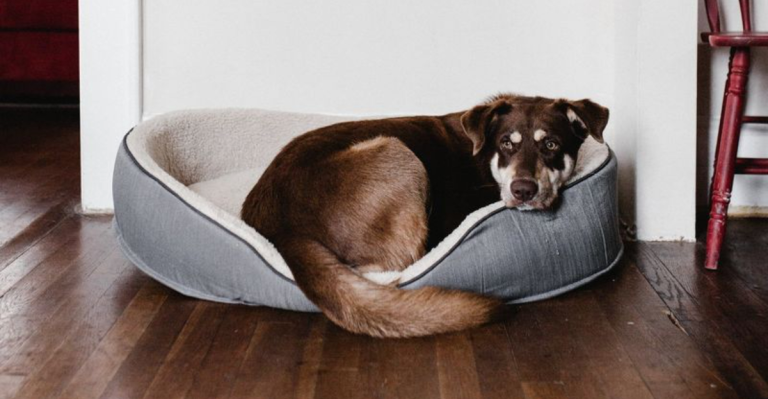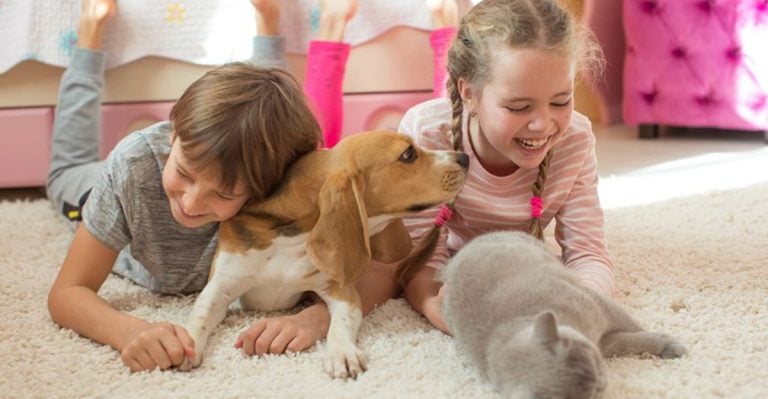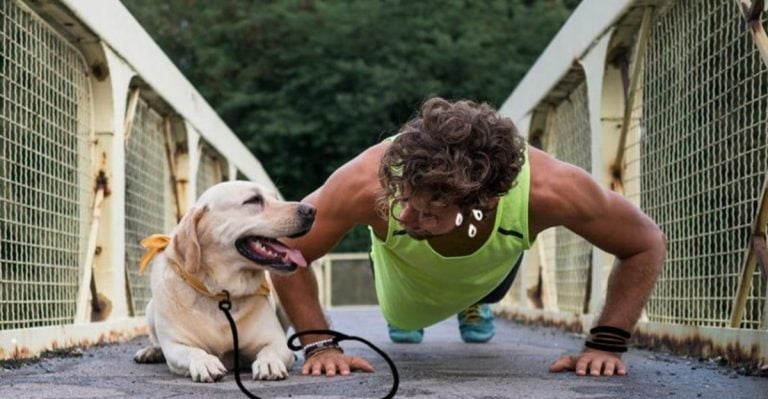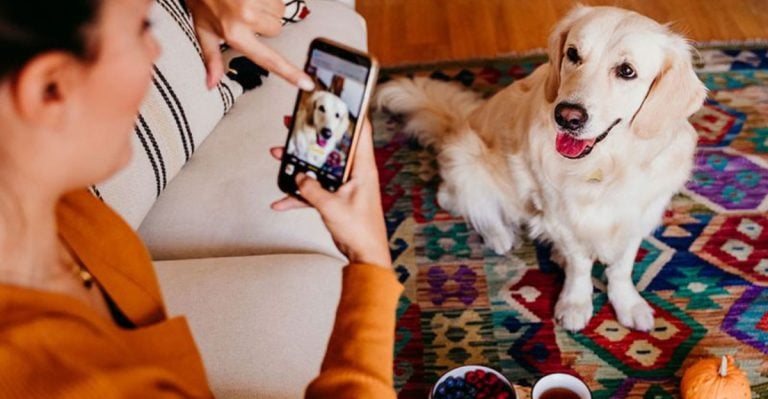12 Signs Your Dog Feels Totally Safe and Loved in Your Home
Our dogs can’t tell us how they feel with words, but they communicate loud and clear through their behavior. Every tail wag, every sigh, and every glance holds meaning—if we know how to read it. As pet parents, it’s our job to understand the subtle (and not-so-subtle) ways our dogs express their emotional well-being.
A dog who feels safe, secure, and truly at home will show it in a dozen different ways—some of them you might expect, and others that could easily go unnoticed. Maybe it’s the way they curl up next to you with a sigh of contentment. Or the way they confidently explore the backyard without looking over their shoulder. From quiet moments of trust to bursts of joyful play, emotionally stable dogs have a way of letting us know they’re doing just fine—even without saying a word.
Recognizing these signs not only deepens the bond between you and your pup but also reassures you that you’re creating a positive, nurturing environment. Whether you’re a first-time dog owner or a seasoned pro, these cues can help you better understand your dog’s needs and emotions.
So how can you tell if your dog feels emotionally grounded in your home? Look for these 12 clear and comforting signs that your pup is not just surviving—but thriving.
1. Relaxed Body Language
A content dog’s body tells the whole story. Look for loose, floppy muscles instead of tension, especially around their shoulders and back. Their tail might wag gently or just hang in a natural position.
Relaxed ears, a slightly open mouth with a soft tongue (sometimes looking like they’re smiling), and easy breathing all signal your pup feels at home. Even their eyes appear soft rather than wide and alert.
When resting, they might sprawl out completely, exposing their belly—the ultimate vulnerable position that says, “I trust this place completely.” This open posture shows they feel no need to stay ready to jump up and defend themselves.
2. Healthy Appetite
Dogs who feel secure develop consistent eating habits. They approach mealtime with enthusiasm but not desperate gobbling that suggests food insecurity. Your pup might wait patiently while you prepare their meal, showing they trust food will come.
Many content dogs actually leave food in their bowl occasionally, demonstrating they know more will be available later. They might even take treats gently from your hand rather than snatching them.
Some secure dogs also show their comfort by carrying kibble away from their bowl to eat elsewhere—a quirky behavior showing they feel safe enough to eat anywhere in their territory without guarding their food source.
3. Peaceful Sleep Patterns
Happy dogs sleep deeply and often. You’ll catch them dreaming—those adorable twitches, quiet woofs, and paw movements happen during REM sleep, which dogs only enter when they feel completely safe. A secure pup might snore softly or even sleep on their back with paws in the air.
Location matters too. Dogs who feel at home choose consistent sleeping spots, often near family members. They might rotate between favorite spots depending on the time of day, following sun patches or cooler areas.
Watch how they wake up—a slow, stretchy rise with a leisurely shake means they weren’t sleeping with one eye open. Anxious dogs startle awake; content dogs transition smoothly from naps to activity.
4. Playful Exploration
Curiosity thrives in secure environments. A happy dog investigates new toys with enthusiasm rather than suspicion. They’ll bring toys to you, initiating games of fetch or tug-of-war without hesitation.
Secure dogs also display the famous “play bow”—front end down, rear end up with a wagging tail. This universal doggy invitation to play happens only when they feel completely comfortable. You might notice playful barks that sound different from alert or warning barks.
Even older dogs show moments of puppy-like behavior when they feel truly safe. That sudden burst of energy—running in circles or playfully grabbing a toy—reflects their comfort in showing their authentic, joyful selves in your presence.
5. Confidence When Alone
Dogs who feel secure don’t fall apart when you leave. Instead of destructive behaviors or excessive barking, they settle into a relaxed state, perhaps watching out the window or napping until you return.
Home cameras often reveal that well-adjusted dogs simply sleep most of the day while owners are gone. They might move between favorite spots or play with toys occasionally, showing they can entertain themselves.
The moment you return speaks volumes too. Rather than frantic, panicked greetings that suggest separation anxiety, secure dogs offer enthusiastic but controlled welcomes. They’re happy to see you but weren’t stressed during your absence—the hallmark of a dog who feels permanently safe in their home.
6. Balanced Affection Seeking
Love-secure dogs seek physical connection without neediness. They might lean against your leg during a conversation or place their paw on your foot while you work—subtle touches that maintain connection without demanding attention.
Notice how they approach for pets. Confident dogs make gentle requests rather than insistent pawing or nudging. They enjoy affection but don’t panic when it ends, showing healthy attachment rather than dependency.
The evening cuddle ritual reveals much about your bond. Many content dogs initiate brief connection moments throughout the day, then settle nearby, comfortable in your presence without constant contact. This balanced approach to affection—neither clingy nor distant—signals deep trust in your relationship.
7. Social Ease
A secure dog handles new people and places with remarkable grace. Rather than hiding or showing aggression, they approach visitors with friendly curiosity or maintain a calm distance while observing. This confidence comes from knowing their home is a predictable, safe base.
Watch how they behave in unfamiliar settings. Dogs who feel loved at home often transfer that confidence to new environments, exploring with interest rather than fear. They check in with you visually, using your calm presence as reassurance.
Even shy dogs show progress over time in a loving home. Their “comfort bubble” gradually expands, allowing them to relax around more people and in more situations—a beautiful transformation that happens only when they feel fundamentally safe with you.
8. Quiet Contentment
Excessive vocalization often signals distress. Content dogs bark with purpose—to alert you to visitors or join neighborhood “conversations”—but quickly settle when reassured. They don’t feel the need for constant noise.
Listen for the sounds they don’t make. Whining, howling, and repetitive barking typically indicate anxiety or boredom. Their absence suggests your dog feels emotionally satisfied and mentally stimulated in your home.
Many happy dogs develop a special “talking” vocabulary with their humans—not barks but gentle grumbles, sighs, or playful growls during games. These comfortable vocalizations differ dramatically from stress sounds, showing they’re communicating rather than complaining—the canine equivalent of relaxed conversation.
9. Responsive Cooperation
Dogs who feel secure respond to commands from a place of trust, not fear. They maintain eye contact during training sessions and show eagerness to participate. This willing cooperation comes from knowing that following your guidance leads to positive outcomes.
Look for the “checking in” behavior during walks or play. Secure dogs frequently glance at their humans, maintaining an invisible connection even while exploring. They’re not constantly seeking approval but confirming their bond.
Even when they occasionally test boundaries (they’re still dogs, after all!), notice how they respond to correction. Rather than cowering or shutting down, confident dogs adjust their behavior and bounce back quickly. This resilience shows they understand mistakes don’t threaten their standing in the family.
10. Gentle Eye Connection
The eyes truly reveal your dog’s emotional state. Secure dogs make soft, relaxed eye contact that feels comfortable rather than challenging. Their gaze lacks the hard stare of fear or aggression.
Many content dogs perfect the art of “love eyes”—a soft, slightly squinted look that ethologists call an “affiliative gaze.” You might notice they blink slowly while looking at you, a behavior similar to the “slow blink” cats use to show affection.
Pay attention to when they meet your eyes. During greetings, meals, and quiet moments, these gentle connections strengthen your bond. A dog who can maintain calm eye contact while being petted or examined has developed deep trust in your relationship—one of the most beautiful gifts in dog ownership.
11. Rhythm and Routine
Predictable patterns create security, and content dogs show it by anticipating daily routines. They might wait by the door before walk time or settle near their bowls before meals, showing they trust in the consistency of care.
Watch their body language during transitions. Happy dogs flow smoothly between activities, showing excitement for favorite parts of the day without anxiety. Their ability to relax between events demonstrates faith in the household rhythm.
Many secure dogs even develop their own adorable routines—like a specific pre-bedtime stretch or morning greeting ritual. These personal patterns emerge only in environments where they feel safe enough to develop preferences and habits, knowing their basic needs will always be met.
12. Harmonious Pet Relationships
Multi-pet households reveal volumes about each animal’s security level. Confident dogs establish respectful boundaries with other pets without excessive dominance or submission. They might share resting spaces or toys, showing remarkable generosity.
Look for playful interactions between your pets. Secure dogs adjust their play style to accommodate smaller animals or older companions. These thoughtful accommodations show emotional intelligence that develops in safe environments.
Even occasional disagreements resolve quickly in homes where all animals feel secure. Rather than escalating conflicts, well-adjusted dogs use subtle communication to negotiate—brief growls, play bows, or simply walking away. This sophisticated social behavior emerges when dogs know their position in the family is unconditionally secure.


















